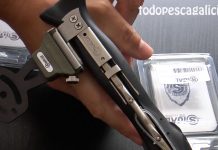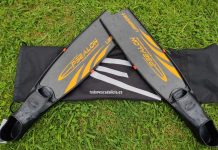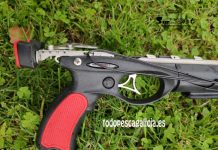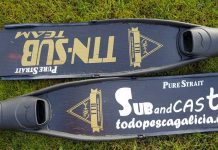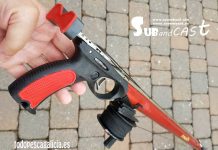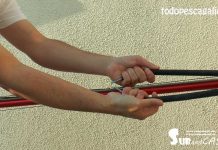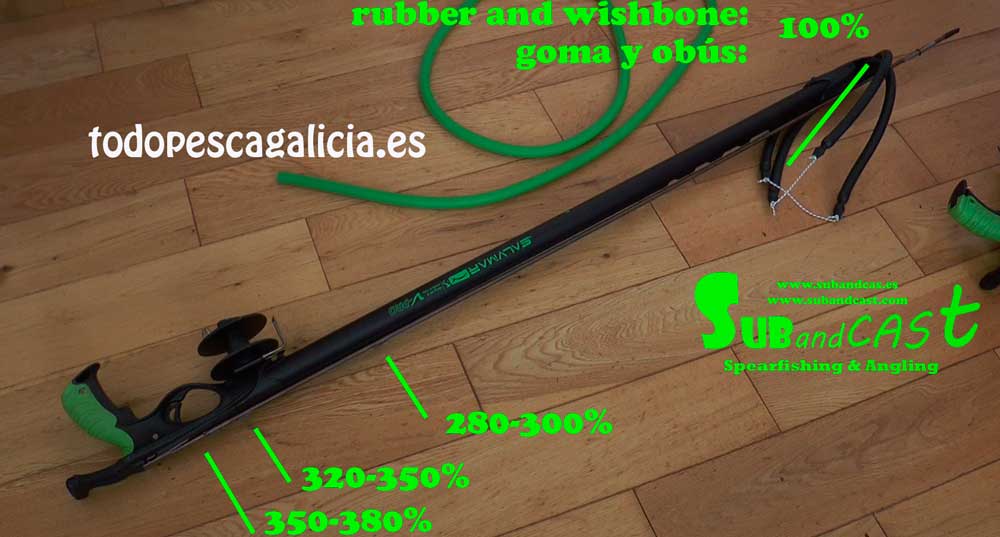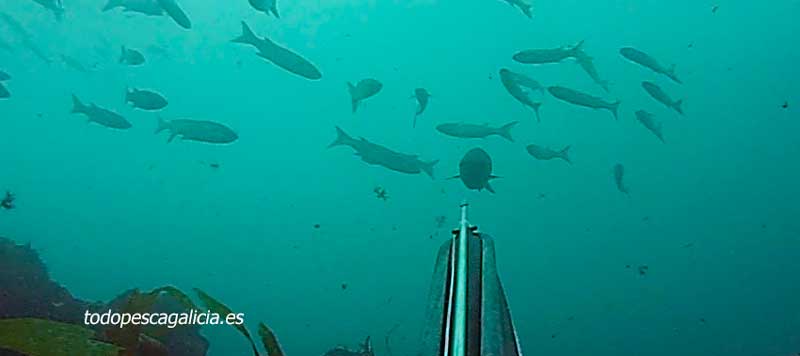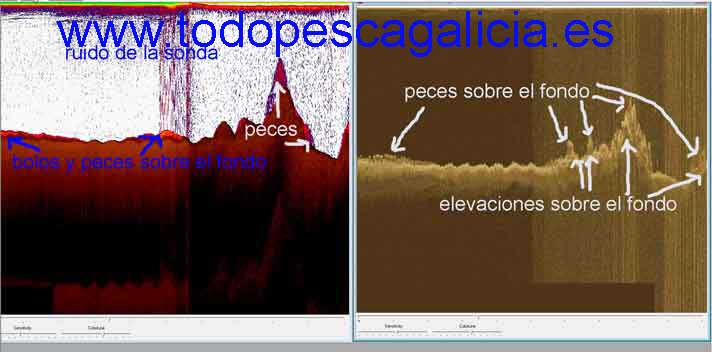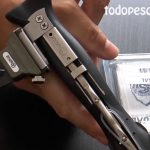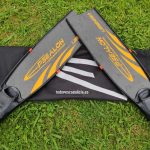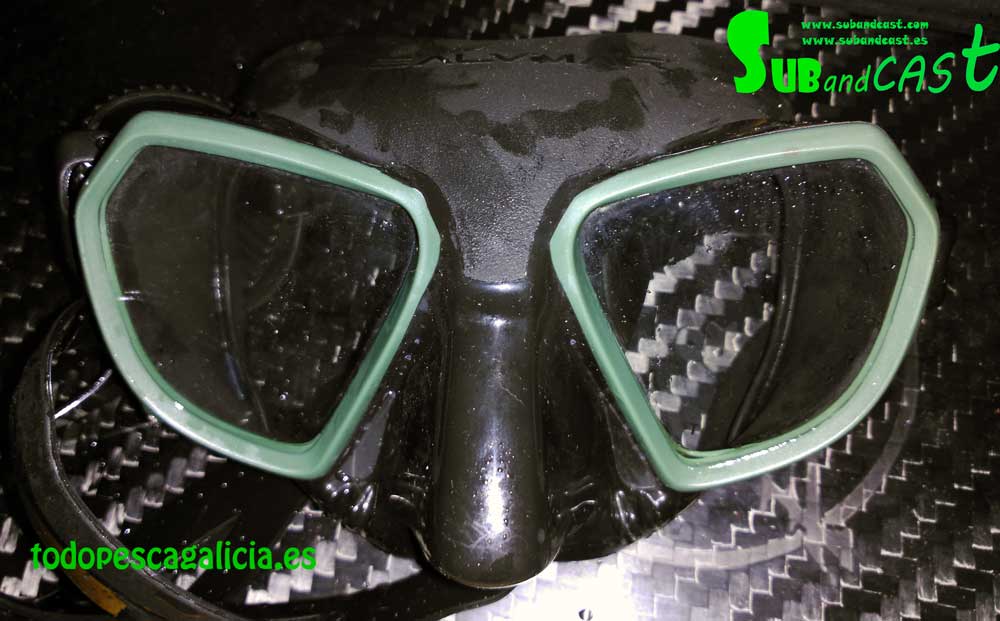SPEARFISHING IN THE SWELL
This type of spearfishing consists in looking for the fish in very shallow depths, in those spots where the waves break. Usually, the species to target are predators (for example the white sea bass) and the white sea bream. It is very demanding physically, it forces us to be in good shape to be able to fight against the waves. Besides this, a good knowledge of the sea it’s needed, understand when the waves stop and how to exit from difficult spots when the waves get stronger. The way to start with this technique is with small swell and in easy spots, to gain experience and gradually get used to stronger breaks.
The technique is easy, we should dive a little big far from the rock (the shore or a pinnacle) in which the waves are breaking, and once we reach the bottom or the wall, start ascending slowly to find the fish eating in the surface. It seems very easy at the first view, but it gets more difficult with clear water or when the waves are big. Another variation is to do waits or slow stalks trying to make those sea basses that we can not see get closer. For this, it is a must to be very close to the bottom, using the holes and stones to fit ourselves in and to avoid being moved or lifted by the waves.
The gear in general will be fast spearguns, that can be easily moved against the swell. It’s okay to be a bit overweighted to stay close to the bottom. The wetsuit should be as thin as possible to carry less amount of weight. We have to take in mind that the more weight, the more momentum we will have, and it will be more difficult to move ourselves and to stay close to the bottom. The lighter we are, the faster we can move, and the fishing action will be easier. Thin shafts, and fast rubber bands. Usually, we will use 82 – 85 cm guns, with a 130 shaft and 17-18mm bands maximum. It’s even a good option to go for more specific guns, 80 – 90 cm with 14 – 15 mm bands, 6mm shaft for fast shots, with double nylon length. The maximum size will be 90 cm when there is not a lot of swell. We can even use 75 cm with big waves and dirty water. The fins have to be reactive and powerfull.
Another version of spearfishing in the swell is, when we feel the waves are too strong for us and we can not get close to the shore, stay a little bit deeper, where we can handle the waves and do waits. The white sea breams and the white sea basses will come closer a lot of the time.
Something we always have to keep in mind when spearfishing in the swell is that to exit from difficult spots, the best choice will always be under the water. And when the wave goes against the rock, it’s better to stay in the bottom, holding on something, and use the strength of the wave after breaking, that moves out of the breaking line. Most of the times, trying to fight against the swell directly is useless, and it will be more efficient to wait on the bottom, holding on, to get taken out of there by the wave itself.
Specially during the winter, when we can ‘t stay spearfishing deeper due to the cold, it is the best option, looking for white sea bream and white sea bass. With the experience we will know the spots with more fish and how to enter them.
Safety is important. We shouldn’t try to enter in spots that we don’t know for sure that we can exit, because we would be under the risk of ending on the rocks, which in some cases it will be bruises, and in some other it will be more serious problems, even not being able to exit. For this, we should always avoid flat shores, were the waves gain a lot of strength. However, in very vertical shores, with flat stone in the bottom, the risk is smaller, because the waves will not drag as much. The experience and the common sense should be our partners. And over all, start slow and step by step.
As we already said, the best is to go step by step. Days with good weather, with small waves and small cycle, start to feel how the waves move us. The series, when they come hard and when they stop in between. Fit ourselves in the bottom and see the spots where we can get sheltered to avoid a strong series… Practice and gain experience. Don’t forget that is a type of fishing with a high risk of get hit. Is the fishing technique in which we will not need big breath-holds at all, because in a lot of occasions 30 seconds is more than enough. But it demands a good fitness level (we can finish sweating).



